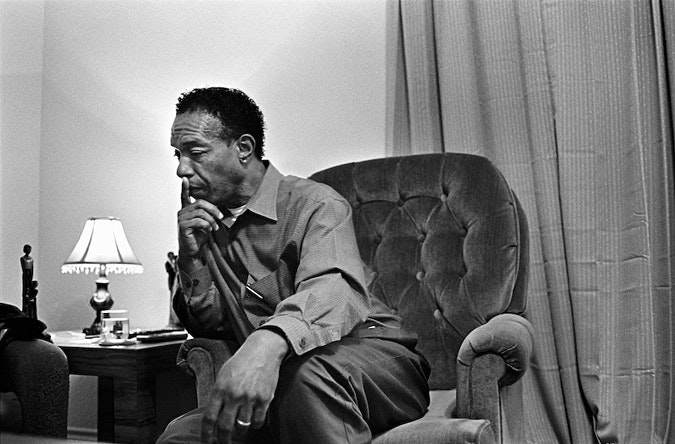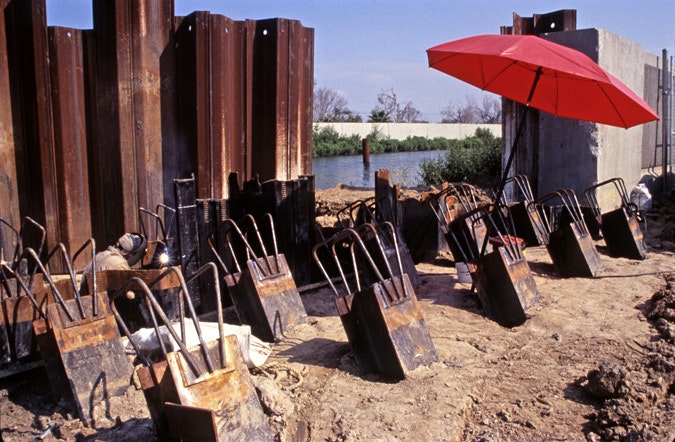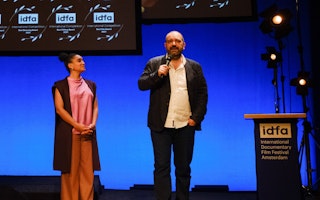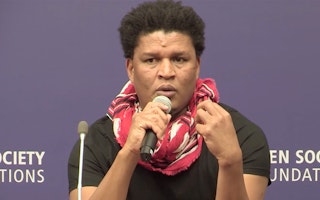Photographers Reflect on Katrina, Five Years Later (Part 2)
By Yukiko Yamagata
In 2006, the Open Society Foundations launched a one-time investigative journalism fellowship to promote a national conversation on racism and inequality in America following Hurricanes Katrina and Rita. The Katrina Media Fellowships supported dynamic print and radio journalists, photographers, and documentary filmmakers to generate and improve media coverage of issues exposed by Katrina.
I asked photographers who received fellowships to reflect back on some of their images and describe how life has changed for the people and places they photographed. The following are some of their stories.
Joseph Rodriguez

Lorenzo Ford, 43, a social worker and former director of a New Orleans homeless shelter, was among hundreds of evacuees who found refuge in Denton, TX when Hurricane Katrina struck. In this photo, taken at his home in Dallas, Lorenzo expressed how much he wished to go back to New Orleans, but feared he wouldn’t be able to afford to live and work there. In 2008, Lorenzo was diagnosed with cancer. Currently, he lives on disability, still in Dallas, awaiting approval for public housing in New Orleans. After six more months of chemotherapy and radiation treatment, he hopes to be cancer free.

This photograph shows displaced residents more than two months after arriving in Denton. This image was taken during a meeting with the non-profit group MASS, Mothers and Fathers for the Advancement of Social Systems. Fatigue lines the faces of dozens of adults who have learned that federal assistance will be ending soon.
In the aftermath of Katrina, MASS was working with evacuees to help them chart their futures in an unfamiliar state. Currently, the organization itself faces a significant lack of funding and has had to lay off all the office workers. MASS now relies solely on volunteers to continue offering services and access to education, employment, and housing for families and individuals coming out of prison.
Joseph Rodriguez is a New York-based freelance photojournalist whose work has appeared in publications such as the New York Times Magazine, National Geographic, Marie Claire, GQ, Jane, Ebony, Mother Jones, Newsweek, American Photo, B&W, and Stern. For his Katrina Media Fellowship project, Rodriguez created an extensive body of photographs of people affected by the hurricane and floods. See more images from Joseph Rodriguez’s Katrina Media Fellowship project.
Shawn Walker

One of my interests was in the levees that had failed and allowed New Orleans to be so totally flooded. Not familiar with what they were or how they were supposed to work, I had someone take me to an area where they were being repaired. The naked face of the city--which sits below sea level--was impressive viewed from the perspective of all the damage around me.
Much of the repair work has been done. The Times Picayune reported this July that 380 miles of levees, floodwalls and gates have been completed, costing $1.1 billion so far with another $5.8 billion of work left. While most people, including the Army Corps of Engineers, feel that the system is stronger and more resilient than ever, others have raised concerns that the new system will be unable to protect the New Orleans area from future storms.
Shawn Walker is a New York-based photographer whose work is exhibited and collected by major institutions, including the Brooklyn Museum, the Schomburg Center for Research in Black Culture, the Whitney Museum of American Art, the Museum of Modern Art, and the Studio Museum in Harlem. He is a member of Kamoinge, an African American photographers' collective. For his Katrina Media Fellowship project, Walker documented the new urban landscape New Orleans residents were left with after the flood waters subsided. See more images from Shawn Walker's Katrina Media Fellowship project.
In the five years since Hurricane Katrina hit New Orleans and the levees broke, residents have developed innovative approaches to tackling some of the city’s—and the nation’s—most persistent problems: criminal justice reform, unresponsive government, and racial and economic inequality. In recognition of these efforts, during the month of August the Open Society Blog shines a light on people and organizations in New Orleans bringing change from within one of the country’s most important cities.

Until December 2021, Yukiko Yamagata was curatorial and deputy director of Culture and Art at the Open Society Foundations.


